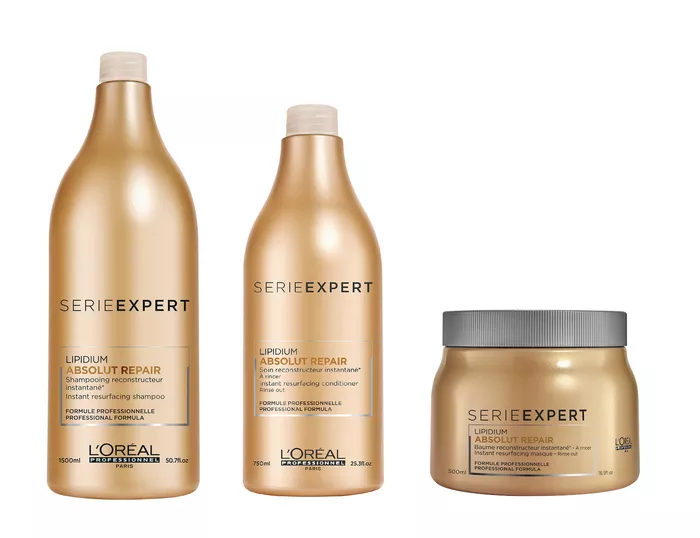Hair damage is a common concern, stemming from factors such as heat styling, chemical treatments, and environmental stressors. In the pursuit of restoring hair health, many turn to various products, with conditioners often at the forefront. The question remains: Can conditioner truly repair damaged hair? In this comprehensive guide, we will explore the role of conditioner in hair repair, shedding light on its efficacy and offering insights into how to maximize its benefits.
Understanding Hair Damage
Before delving into the reparative properties of conditioners, it’s essential to understand the nature of hair damage. Hair strands consist of a protective outer layer called the cuticle, and when this layer is compromised, it can lead to a range of issues, including split ends, breakage, and overall dullness. Common causes of damage include excessive heat styling, chemical processes like coloring or perming, and exposure to harsh environmental conditions.
The Basics of Conditioners
Conditioners are formulated to improve the texture and manageability of hair by providing moisture, detangling, and smoothing the cuticle. While conditioners play a crucial role in maintaining healthy hair, their ability to repair extensive damage is often limited. It’s essential to recognize that severe damage may require more targeted treatments, such as deep conditioning masks or professional salon treatments.
Hydration and Moisture Balance
One of the primary functions of a conditioner is to hydrate the hair. Damaged hair tends to be porous, allowing moisture to escape easily and leaving the hair feeling dry and brittle. Conditioners contain ingredients that help retain moisture, improving the overall hydration levels of the hair shaft. By addressing dryness, conditioners contribute to the restoration of hair elasticity and suppleness.
Protein-Rich Formulas for Strength
Many conditioners, especially those labeled as “repair” or “strengthening,” contain proteins that can temporarily mend damaged areas of the hair shaft. Proteins, such as keratin or hydrolyzed silk, help reinforce weakened hair, reducing the risk of breakage. While protein-rich conditioners can be beneficial for damaged hair, it’s crucial to strike a balance, as excessive use may lead to protein overload, causing stiffness and potential breakage.
Repairing the Cuticle Layer
The cuticle layer acts as a protective barrier for the hair shaft, and damage often involves the lifting or roughening of this layer. Some conditioners contain ingredients that work to smooth and seal the cuticle, minimizing frizz and enhancing shine. Silicones, such as dimethicone, are commonly found in conditioners and contribute to the temporary improvement of the hair’s appearance by creating a smooth surface. However, it’s essential to use these products judiciously, as an excess of silicones can lead to buildup over time.
Deep Conditioning for Intensive Repair
For more intensive repair efforts, deep conditioning treatments can be a valuable addition to your hair care routine. These treatments often contain higher concentrations of moisturizing and repairing ingredients, offering a more potent solution for damaged hair. Applying a deep conditioner regularly, such as once a week, can provide a concentrated dose of nutrients and hydration, promoting the restoration of damaged hair over time.
How to Maximize Conditioner Benefits
While conditioners play a crucial role in maintaining and improving hair health, it’s important to use them correctly to maximize their benefits. Start by selecting a conditioner that aligns with your specific hair needs, whether it be moisture, protein, or overall repair. Apply the conditioner evenly, focusing on the mid-lengths and ends where damage is often more pronounced. Allow the conditioner to sit for the recommended time to ensure proper absorption of beneficial ingredients.
Complementary Hair Care Practices
To enhance the effectiveness of conditioners in repairing damaged hair, consider adopting complementary hair care practices. Minimize the use of heat styling tools, protect your hair from the sun and harsh weather conditions, and be mindful of chemical treatments. Regular trims are also essential to remove split ends and prevent further damage from traveling up the hair shaft.
See Also: 7 Benefits of Hair Treatments: Everything You Need To Know
Conclusion: Conditioner as a Vital Ally
In the quest for repairing damaged hair, conditioner emerges as a vital ally, offering hydration, smoothing effects, and even temporary structural repair. While conditioners may not perform miracles on severely damaged hair, they play a pivotal role in maintaining overall hair health and preventing further harm. By understanding the functions of conditioners and incorporating them into a holistic hair care routine, you can promote the restoration of damaged hair and enjoy the benefits of a healthier, more vibrant mane.


